Table of Contents[Hide][Show]
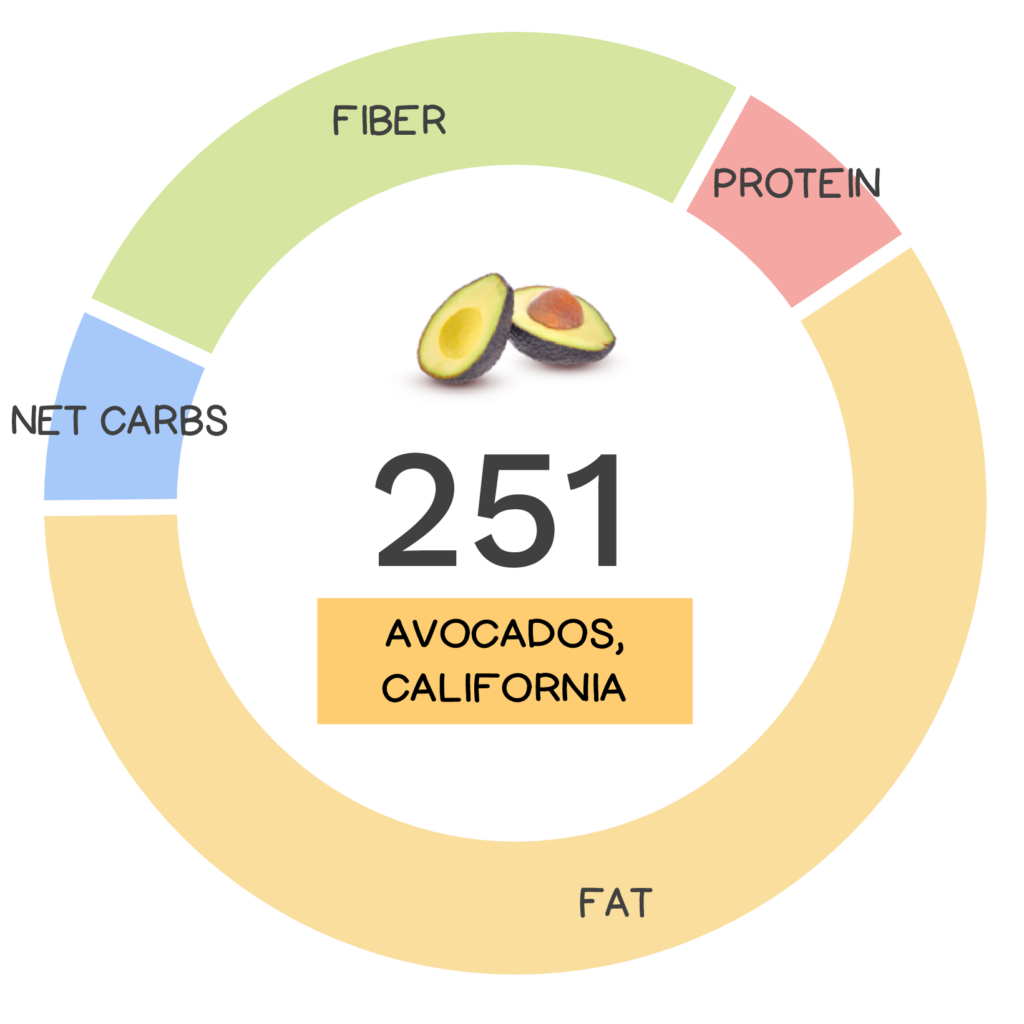
When it comes to trendy foods, avocados definitely come to mind! Not only are avocados uniquely included in all sorts of recipes (think pudding and ice cream!), everywhere you look, we are bombarded with avocado merch – from clothing, to stuffed toys and accessories. This avocado-craze has resulted in exponential growth in popularity for this fashionable food. In 2000, average consumption in the US was 2.2 pounds of avocados per year which skyrocketed to 7.8 pounds in 2019. That’s a lot of guacamole!
Avocados originated in south-central Mexico, sometime between 7,000 and 5,000 BC and there is evidence that they were cultivated in Mexico as early as 500 BC.
Avocados, sometimes referred to as ‘avocado pear’ or ‘alligator pear’, are definitely a fruit – a berry, in fact. The avocado (Persea americana) originated in south-central Mexico, sometime between 7,000 and 5,000 BC, but it was several millennia before this wild variety was cultivated, with fossil evidence suggesting that avocados were once much more widespread in cultivation. The oldest discovery of an avocado pit comes from Coxcatlan Cave dating from around 9,000 to 10,000 years ago. Archaeologists in Peru have found domesticated avocado seeds buried with Incan mummies dating back to 750 BC and there is evidence that avocados were cultivated in Mexico as early as 500 BC! This fruit was used as tributes to royalty in Mesoamerica as far back as 7,000 years ago. The word “avocado” comes from the Spanish aguacate and the word guacamole is derived from the Aztec word ahuacamolli, translating to “avocado sauce” or “avocado soup.”
Mexico is the leading producer of avocados world-wide, with three-quarters of their production exported to the United States.
Today, it’s no surprise that Mexico is the leading producer of avocados world-wide. In 2019, world production of avocados was 7.2 million tonnes, with Mexico contributing 32% of the total, 76% of which was exported to the United States. Approximately 95% of United States avocado production is located in Southern California and avocado is the official fruit of this state! Amazingly, one avocado variety (Hass) accounts for approximately 80 percent of all avocados eaten worldwide, but its origin was purely accidental! In the late 1920s, a Californian letter carrier, Rudolph Hass, planted a batch of avocado seedlings at his home. As they matured, his children pointed out a strange tree among the batch. Although he planned to cut it down, they stopped him, saying they preferred the fruit from the oddball tree to that of the other varieties he grew and the rest is history (lesson to us parents – listen to your children!). Later he named the new variety after himself and patented the tree. Today, all Hass avocados are direct descendants from this single “Mother Tree,” which finally succumbed to root rot at the age of 76 in 2002. This variety’s high yield, richer, nuttier taste, durability and longer shelf life are just some of the reasons contributing to its popularity!
Nutrivore Score for California Avocado – 251
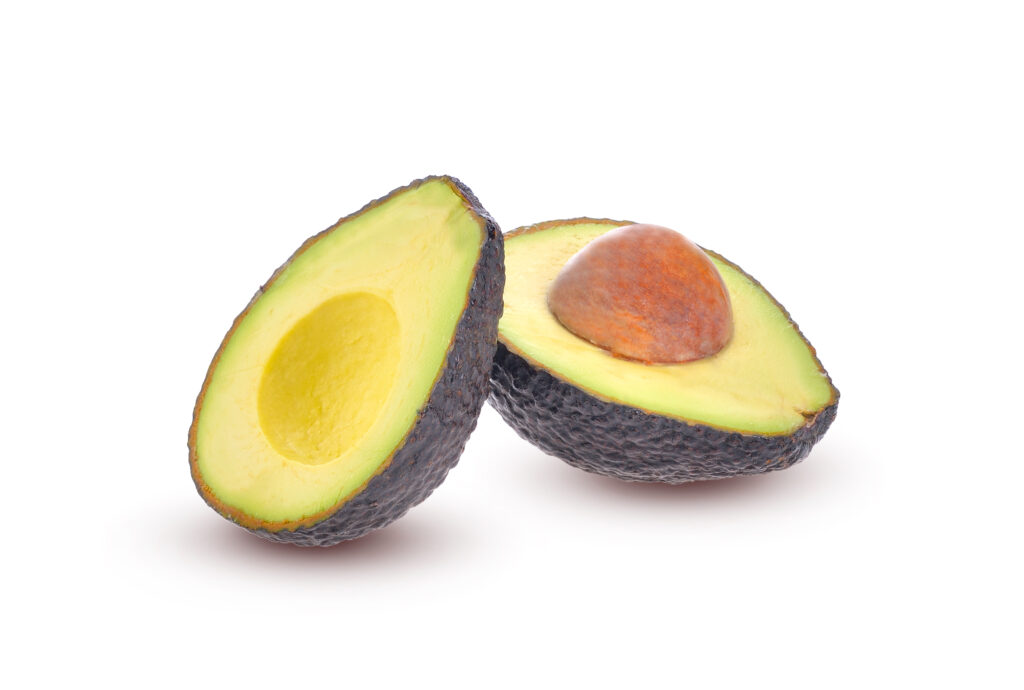
California avocado has a Nutrivore Score of 251, making it a medium nutrient-dense food! Plus, it is a low-carb food; California avocado has 1.3 grams of net carbs per 1/4-cup serving.
Per serving, California avocado is an excellent source (20-50% daily value) of monounsaturated fats (MUFA), polyphenols, vitamin B5 (pantothenic acid), and vitamin B7 (biotin); and a good source (10-20% daily value) of copper, coQ10, dietary fiber, vitamin B6 (pyridoxine), vitamin B9 (folate), vitamin E, and vitamin K.
Ditch Diets. Embrace Nutrients. Start with this FREE Guide.
Sign up for the free Nutrivore Newsletter, your weekly, science-backed guide to improving health through nutrient-rich foods — without dieting harder —and get the Beginner’s Guide to Nutrivore delivered straight to your inbox!

California Avocado Nutrition Facts
One serving of California avocado is standardized to 1/4 cup or about 68 grams (2.4 ounces). A typical California avocado (without skin and seed) weighs 136 grams, which means: one serving of California avocado is equivalent to 1/2 an avocado.
California Avocado Nutrition Facts Per Serving
| California avocado, raw | Nutrivore Score: 251 | Nutrient Density: Medium |
|---|---|---|
| Serving Size: 1/4 cup or 1/2 fruit (68 grams) | Protein: 1.3 grams | Net Carbohydrates: 1.3 grams |
| Calories: 114 | Total Fat: 10.5 grams | Dietary Fiber: 4.6 grams |
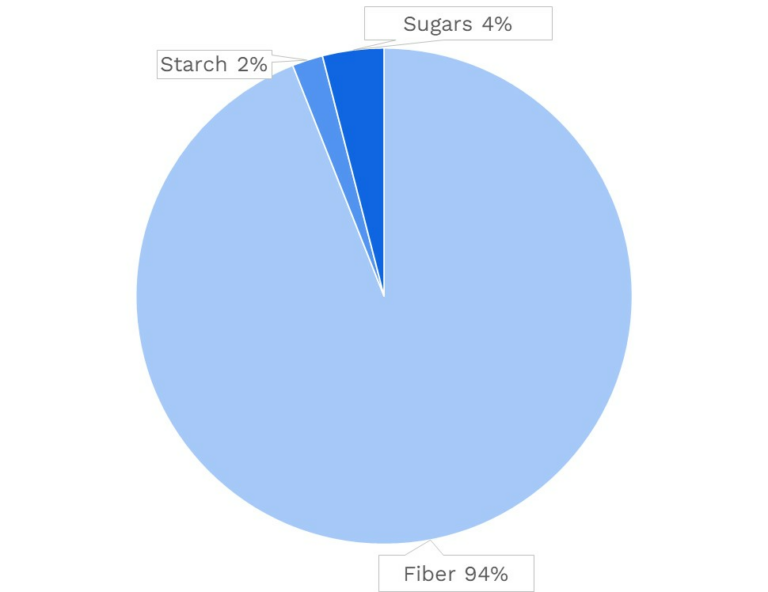
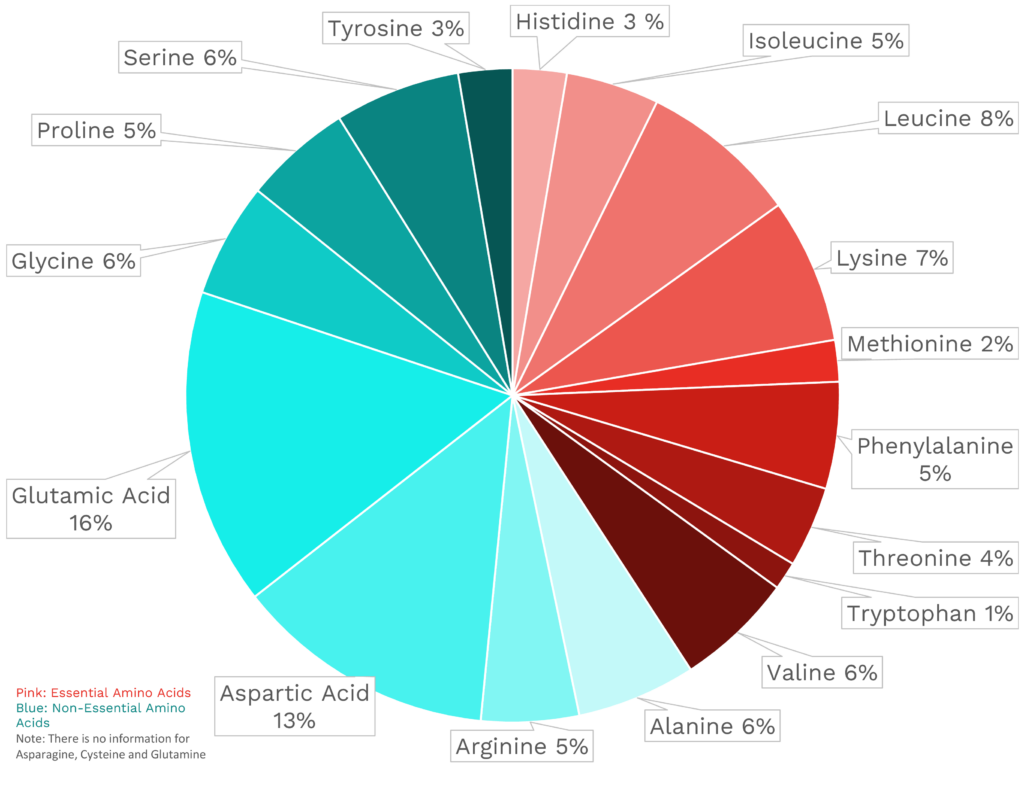

| VITAMINS | ||
|---|---|---|
| Vitamin A | 4.8 μg RAE | 1% DV |
| Vitamin B1 (Thiamin) | 51.0 μg | 4% DV |
| Vitamin B2 (Riboflavin) | 97.2 μg | 7% DV |
| Vitamin B3 (Niacin) | 1.3 mg | 8% DV |
| Vitamin B5 (Pantothenic Acid) | 1.0 mg | 20% DV |
| Vitamin B6 (Pyridoxine) | 195.2 μg | 11% DV |
| Vitamin B7 (Biotin) | 6.8 μg | 23% DV |
| Vitamin B9 (Folate) | 60.5 μg | 15% DV |
| Vitamin B12 (Cobalamin) | 0.0 μg | 0% DV |
| Vitamin C | 6.0 mg | 7% DV |
| Vitamin D (D2 + D3) | 0.0 μg | 0% DV |
| Vitamin E | 1.6 mg | 11% DV |
| Vitamin K | 14.3 μg | 12% DV |
| Choline | 9.7 mg | 2% DV |
| Myo-Inositol | 31.3 mg | ~ |
| CoQ10 | 0.6 mg | ~ |
| FUNCTIONAL FATS | ||
|---|---|---|
| MUFA | 6.7 g | 33% DV |
| ALA | 85.0 mg | 5% DV |
| EPA + DHA | 0.0 mg | 0% DV |
| CLA | ~ | ~ |
| Linoleic Acid | 1.1 g | 7% DV |
| MCT’s | 0.0 g | ~ |
| MINERALS | ||
|---|---|---|
| Calcium | 8.8 mg | 1% DV |
| Copper | 115.6 μg | 13% DV |
| Iodine | ~ | ~ |
| Iron | 0.4 mg | 2% DV |
| Magnesium | 19.7 mg | 5% DV |
| Manganese | 101.3 μg | 4% DV |
| Phosphorus | 36.7 mg | 3% DV |
| Potassium | 344.8 mg | 7% DV |
| Selenium | 0.3 μg | 0% DV |
| Sodium | 5.4 mg | 0% DV |
| Zinc | 0.5 mg | 4% DV |
| PHYTONUTRIENTS | ||
|---|---|---|
| Carotenoids | 261.8 μg | ~ |
| Polyphenols | 333.2 mg | ~ |
| Phytosterols | 56.4 mg | ~ |
| Glucosinolates | ~ | ~ |
| Thiosulfinates | ~ | ~ |
| Betalains | ~ | ~ |
| AMINO ACIDS & PEPTIDES | ||
|---|---|---|
| Taurine | ~ | ~ |
| Ergothioneine | ~ | ~ |
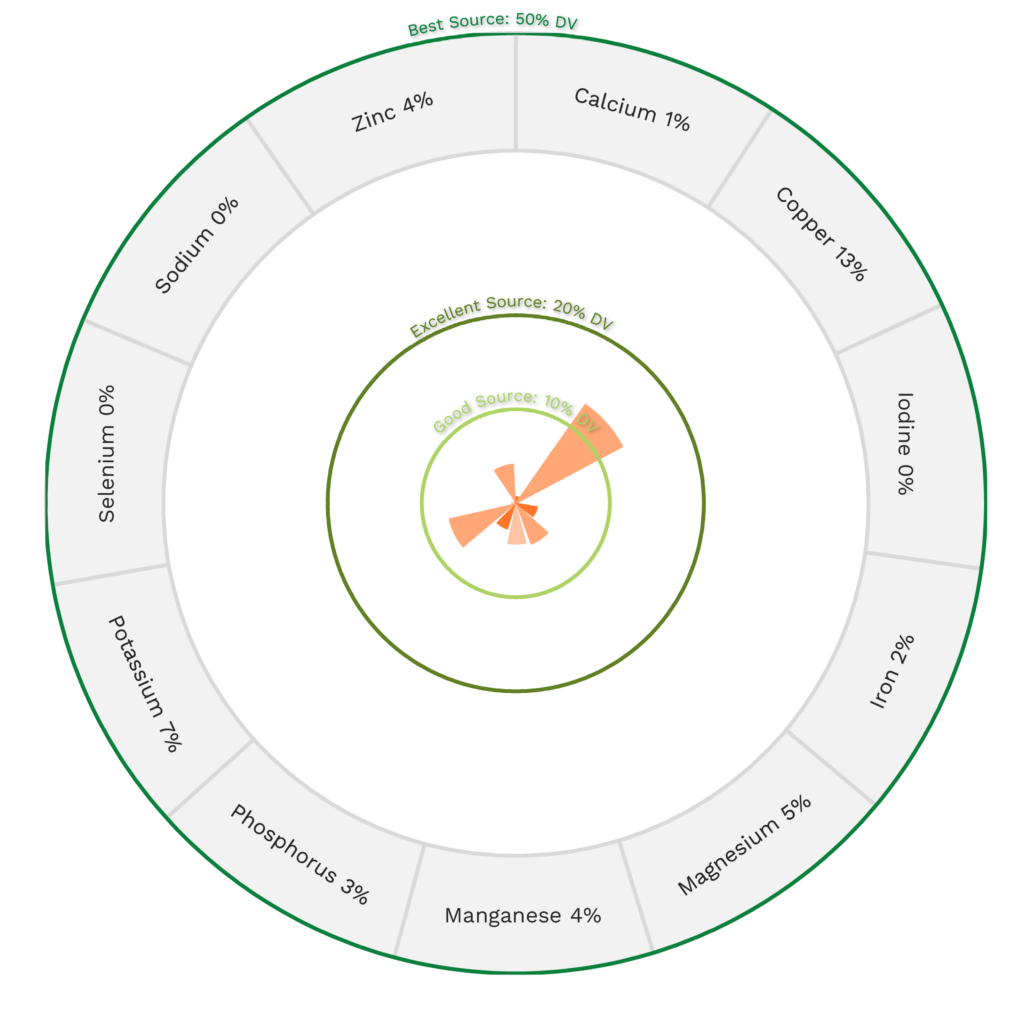

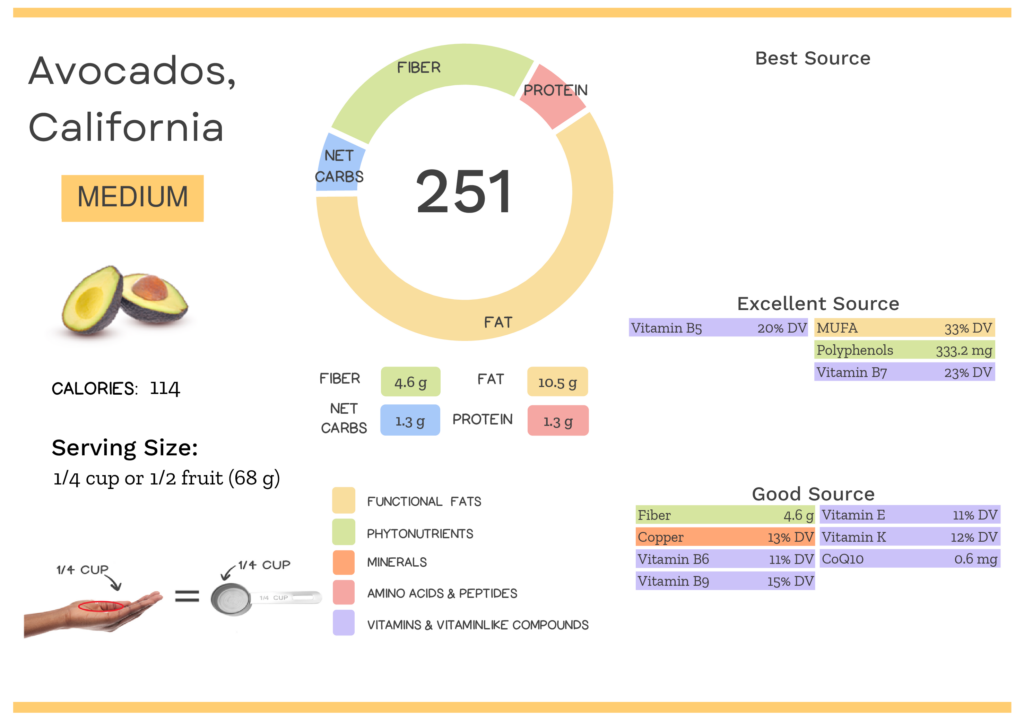
Avocado Nutrition Varies With Variety
There are hundreds of varieties of avocado, however when most of us picture an avocado, we are likely thinking of the Hass variety and with good reason – this is the most common cultivar of avocado and accounts for 80% of cultivated avocados in the world, so that is what we’re likely to find at the local grocery store! West coast (or California) avocados tend to be rich and creamy with a higher fat content and nutty taste (think Haas), while East coast (or Florida) varieties tend to be larger in size, smooth-skinned, bright green in color, and juicer (aka higher water content and lower fat content), with a milder flavor.
| NUTRIVORE SCORE | |
|---|---|
| Avocado, California, raw | 251 |
| Avocado, Florida, raw | 291 |
Avocado Nutrition Varies With Processing
The Nutrivore Score of avocado varies depending on how it has been processed. For instance, avocado oil is a popular kitchen staple. It is the oil produced when avocados are pressed and though it can be expensive, it is worthwhile to have in your home because it doesn’t have a strong or overpowering taste and is great for high-temperature cooking. Due to its predominance of monounsaturated fats (as opposed to highly oxidation-prone polyunsaturated fats), it has an incredibly high smoke point: 520 °F for refined avocado oil and 375 °F for virgin avocado oil.
| NUTRIVORE SCORE | |
|---|---|
| Avocado, California, raw | 251 |
| Avocado oil | 711 |
Did all the nutrition in avocado “guac” your world? Maybe your friends will want to know too!
Health Benefits of California Avocado Nutrients
Let’s take a closer look at all of the best and excellent source of nutrients found in a 1/4-cup serving of California avocado and see how they benefit our health.
California Avocado Provides 333.2 mg of Polyphenols
California avocado is an excellent source of polyphenols, providing 333.2 mg of polyphenols per 1/4-cup serving!
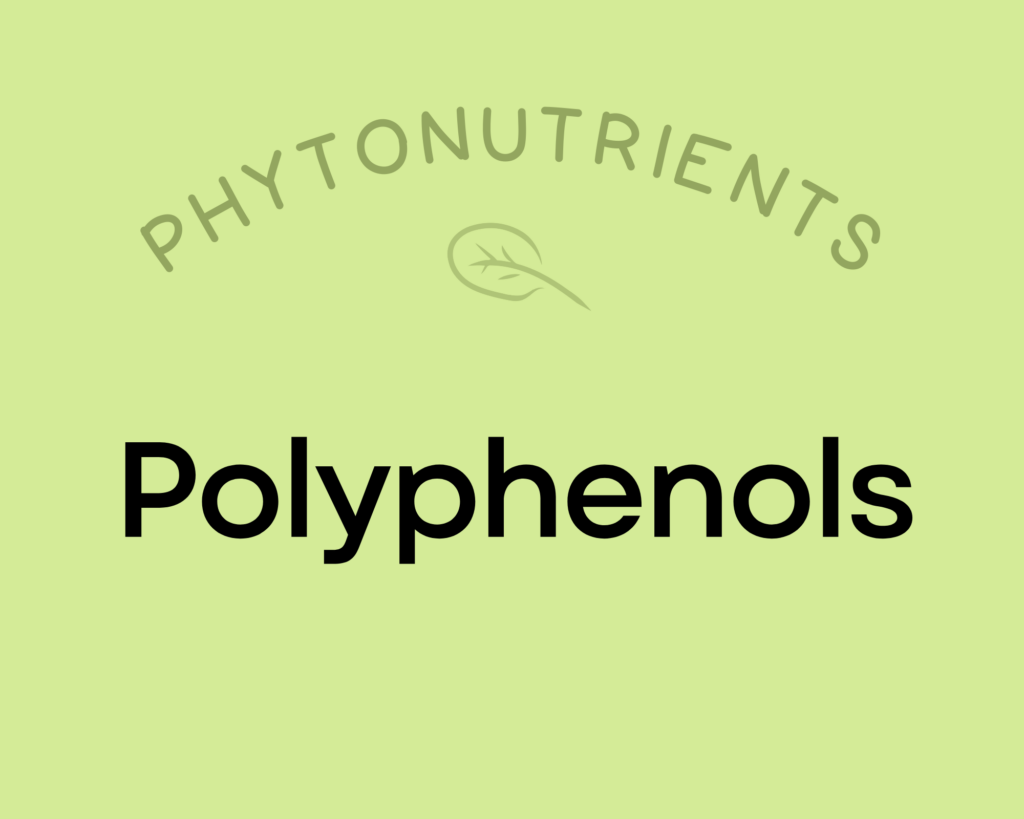
Polyphenols play a huge role in protecting against cancer, heart disease, diabetes, asthma, osteoporosis, neurodegenerative diseases, and other conditions associated with oxidative stress. In fact, a major reason foods like red wine and olive oil (as well as diets rich in both, such as the Mediterranean diet) show up as so beneficial may be due to their high polyphenol content! Along with chronic diseases, supplementing with polyphenols has been shown to protect against infections and reduce the signs of aging. Polyphenols exert their most potent effects by acting as antioxidants—preventing cellular damage by neutralizing hazardous oxygen radicals and improving cellular health as a result (which, in turn, benefits virtually every system in the body). As a result of their antioxidant properties, polyphenols also boost the immune system and protect against both chronic and acute diseases. In addition, polyphenols can help regulate enzyme function, stimulate cell receptors, modulate the functions of inflammatory cells (including T and B lymphocytes, macrophages, platelets, and natural killer cells), alter adhesion molecule expression, affect nerve cells and cardiac muscle cells, and exert antiviral effects. Learn more about polyphenols here.
California Avocado Provides 33% DV Monounsaturated Fats (MUFA)
California avocado is also an excellent source of monounsaturated fats (MUFA), providing 33% of the daily value per 1/4-cup serving!
Avocados are famous for their monounsaturated (heart healthy!) fat content, with the predominant fatty acid in avocado being oleic acid.
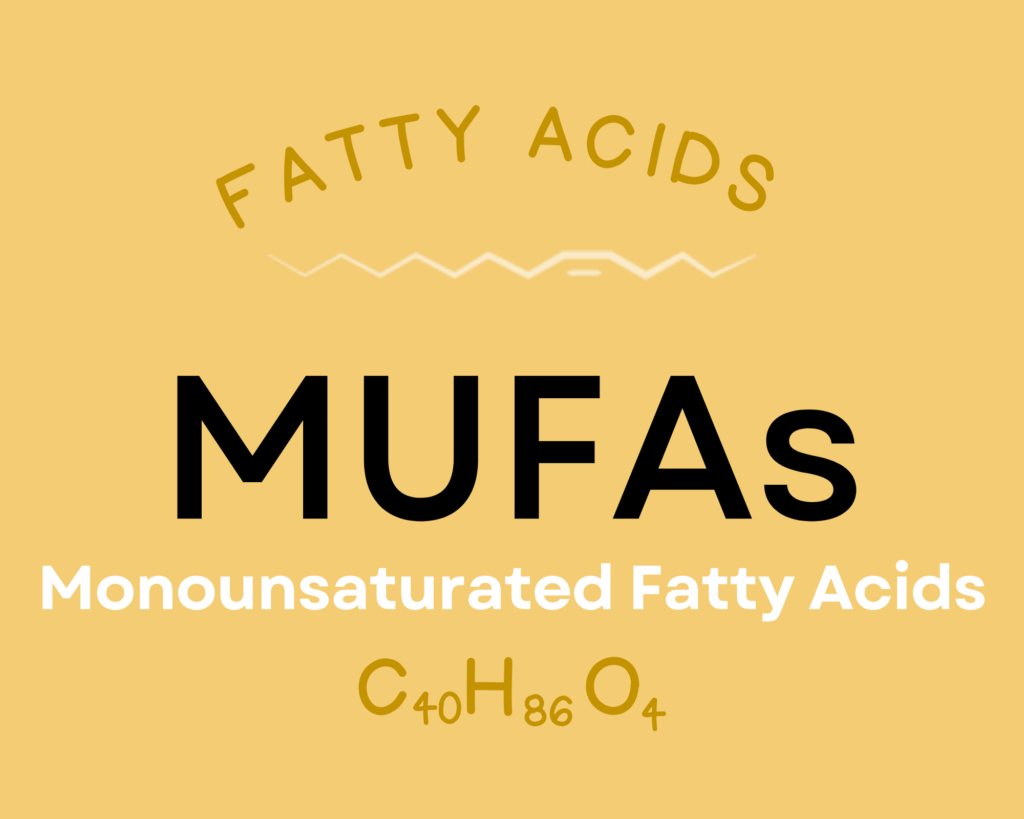
Monounsaturated fatty acids (MUFA), the most abundant of which is oleic acid, play an important role in cellular function due to its presence in phospholipids in cell membranes. Oleic acid is beneficial for cardiovascular health—both in reducing risk factors like high blood pressure, cholesterol, triglycerides, inflammation, and oxidative stress, and in reducing actual cardiovascular disease incidence and events. Oleic acid has even demonstrated anti-cancer activity, with an ability to inhibit the progression, proliferation, and metastasis of several types of cancer cells. Research shows this fat could benefit body weight regulation and obesity through its effects on energy metabolism and lipogenesis. In fact, human trials show that enriching diets with oleic acid leads to decreases in central obesity, abdominal fat, body weight, and food intake, while also possibly increasing energy expenditure! Oleic acid also possesses some benefits for diabetics—influencing genes and pathways involved in insulin signaling and glucose metabolism, as well as helping protect against some complications of diabetes, like diabetic retinopathy and atherosclerosis. Learn more about oleic acid here.
California Avocado Provides 23% DV Vitamin B7 (Biotin)
California avocado is rich in vitamin B7 (biotin), providing 23% of the daily value per 1/4-cup serving!
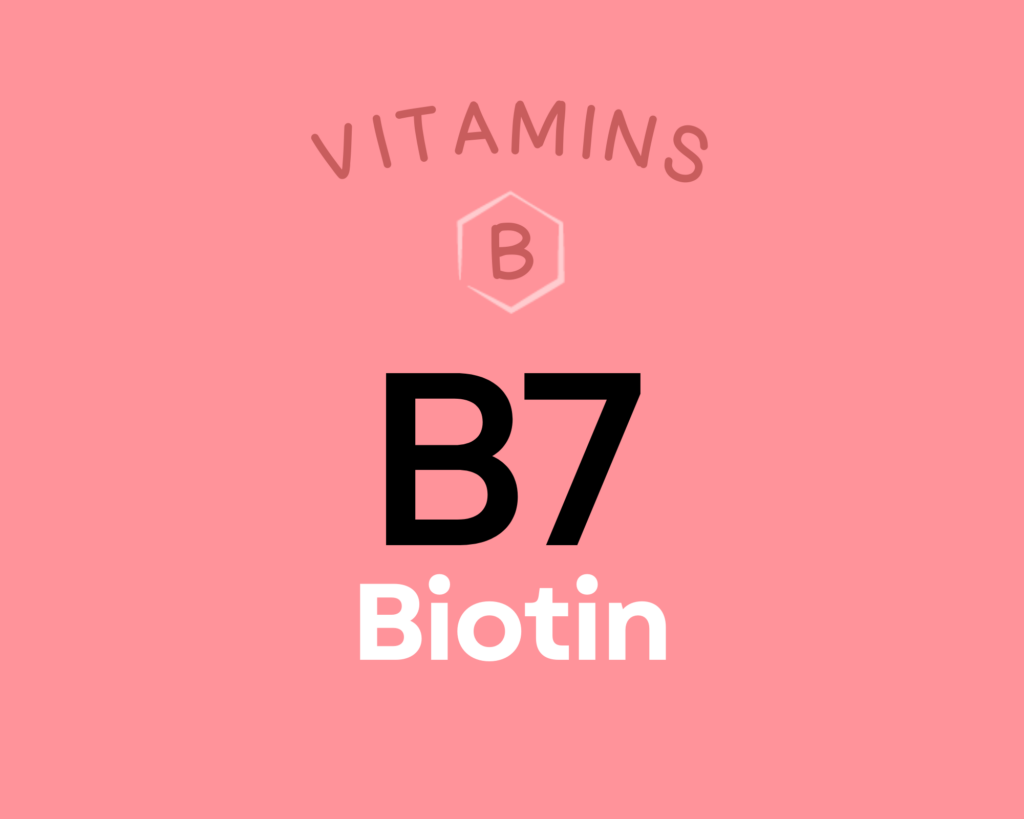
Biotin is a water-soluble B vitamin, also known as vitamin B7. Like other B vitamins, it plays an important role in energy metabolism (serving as a coenzyme for five carboxylase enzymes), neurotransmitter production, cellular function, and the function of various organs. Getting enough biotin can help support healthy nail and hair growth. It’s also particularly important during pregnancy, with low intakes increasing the risk of premature delivery and birth defects. There’s even some evidence biotin can benefit diabetics and reduce functional disabilities in people with multiple sclerosis. Learn more about biotin here.
California Avocado Provides 20% DV Vitamin B5 (Pantothenic Acid)
California avocado is an excellent source of vitamin B5 (pantothenic acid), providing 20% of the daily value per 1/4-cup serving!

Pantothenic acid (or vitamin B5) is a water-soluble vitamin that serves as a cofactor for coenzyme A—which itself is critical for metabolizing many drugs and toxins, as well as forming derivatives (acetyl-CoA and succinyl-CoA) that participate in the synthesis of cholesterol, fatty acids, melatonin, the neurotransmitter acetylcholine, steroid hormones, heme, and vitamins A and D. Coenzyme A is also needed in the Krebs cycle, giving pantothenic acid a role in energy metabolism. Research suggests that a pantothenic acid derivative (pantethine) can help improve blood lipid profiles and reduce fatty streak formation and lipid deposition in the arteries, giving it a cardio-protective role. Additional research shows that panthothenic acid can accelerate wound healing, boost cellular production of the important antioxidant glutathione, and possibly help improve symptoms of rheumatoid arthritis. Learn more about vitamin B5 here.
Learn What Foods Are the Best Sources of Every Nutrient

The Top 25 Foods for Every Nutrient
The Top 25 Foods for Every Nutrient e-book is a well-organized, easy-to-use, grocery store-friendly guide to help you choose foods that fit your needs of 43 important nutrients while creating a balanced nutrient-dense diet.
Get two “Top 25” food lists for each nutrient, plus you’ll find RDA charts for everyone, informative visuals, fun facts, serving sizes and the 58 foods that are Nutrient Super Stars!
Buy now for instant digital access.
How Much Avocado Should We Eat Per Day?
Loved for their buttery, creamy, nutty, velvety taste, and versatility, avocados are also loaded with nutrients in addition to their famous heart-healthy fats, which might just have you shouting “Holy Guacamole!” (Hyuck)
Fatty fruit, especially olives and avocados (and their oils) are very beneficial for our health, especially reducing risk of cancer and cardiovascular disease. For example, a 2022 study showed that just 7 grams of olive oil daily reduces all-cause mortality by 19% compared to rarely consuming olive oil. And another 2022 study showed that eating 2 or more servings of avocado per week reduces cardiovascular disease risk by 16%. A great goal is one ore more serving of fatty fruits or their oils per day (keeping total fat intake to 20% to 35% of total calories). A serving is 1/4 cup for whole olives or avocados, or 1 tablespoon for their oils.
Including avocados in our meals increases the absorption of fat-soluble vitamins and carotenoids from other foods, while improving the conversion of specific carotenoids, like β-carotene, into active vitamin A!
Eating avocados is a great way to help protect against a number of diseases. A 2013 study found people who eat avocados are more likely to have better diet quality, better nutrient status, and a 50% reduced risk of metabolic syndrome, while a 2022 study showed that eating 2 or more servings of avocado per week reduces cardiovascular disease risk by 16%!
It’s always best to mix up the veggies you eat day to day (aiming for a wide variety of different vegetables and fruits throughout the week), and avocado definitely has a place at the table.
Easily track your servings of Nutrivore Foundational Foods!

The Nutrivore Weekly Serving Matrix
The Nutrivore Weekly Serving Matrix digital resource is an easy-to-use and flexible weekly checklist designed to help you maximize nutrient-density and meet serving suggestions of Nutrivore foundational foods, all without having to weigh or measure your foods!
Includes a 22-page instructional guide and downloadable interactive guides.
Buy now for instant digital access.
cITATIONS
Expand to see all scientific references for this article.
Clements RS Jr, Darnell B. Myo-inositol content of common foods: development of a high-myo-inositol diet. Am J Clin Nutr. 1980 Sep;33(9):1954-67. doi: 10.1093/ajcn/33.9.1954. PMID: 7416064.
Fulgoni VL 3rd, Dreher M, Davenport AJ. Avocado consumption is associated with better diet quality and nutrient intake, and lower metabolic syndrome risk in US adults: results from the National Health and Nutrition Examination Survey (NHANES) 2001-2008. Nutr J. 2013 Jan 2;12:1. doi: 10.1186/1475-2891-12-1.
Gómez-Maqueo A, Escobedo-Avellaneda Z, Welti-Chanes J. Phenolic Compounds in Mesoamerican Fruits-Characterization, Health Potential and Processing with Innovative Technologies. Int J Mol Sci. 2020 Nov 7;21(21):8357. doi: 10.3390/ijms21218357. PMID: 33171785; PMCID: PMC7664671.
Kubo H, Fujii K, Kawabe T, Matsumoto S, Kishida H, Hosoe K. Food content of ubiquinol-10 and ubiquinone-10 in the Japanese diet. Journal of Food Composition and Analysis. 2008. Vol 21(3):199-210. https://doi.org/10.1016/j.jfca.2007.10.003.
Pacheco LS, Li Y, Rimm EB, Manson JE, Sun Q, Rexrode K, Hu FB, Guasch-Ferré M. Avocado Consumption and Risk of Cardiovascular Disease in US Adults. J Am Heart Assoc. 2022 Apr 5;11(7):e024014. doi: 10.1161/JAHA.121.024014.
USDA Food Central Database: Avocados, raw, California
Watanabe T, Kioka M, Fukushima A, Morimoto M, Sawamura H. Biotin content table of select foods and biotin intake in Japanese. Int J Anal Bio-Sci. 2014. Vol 2(4):109-125.


